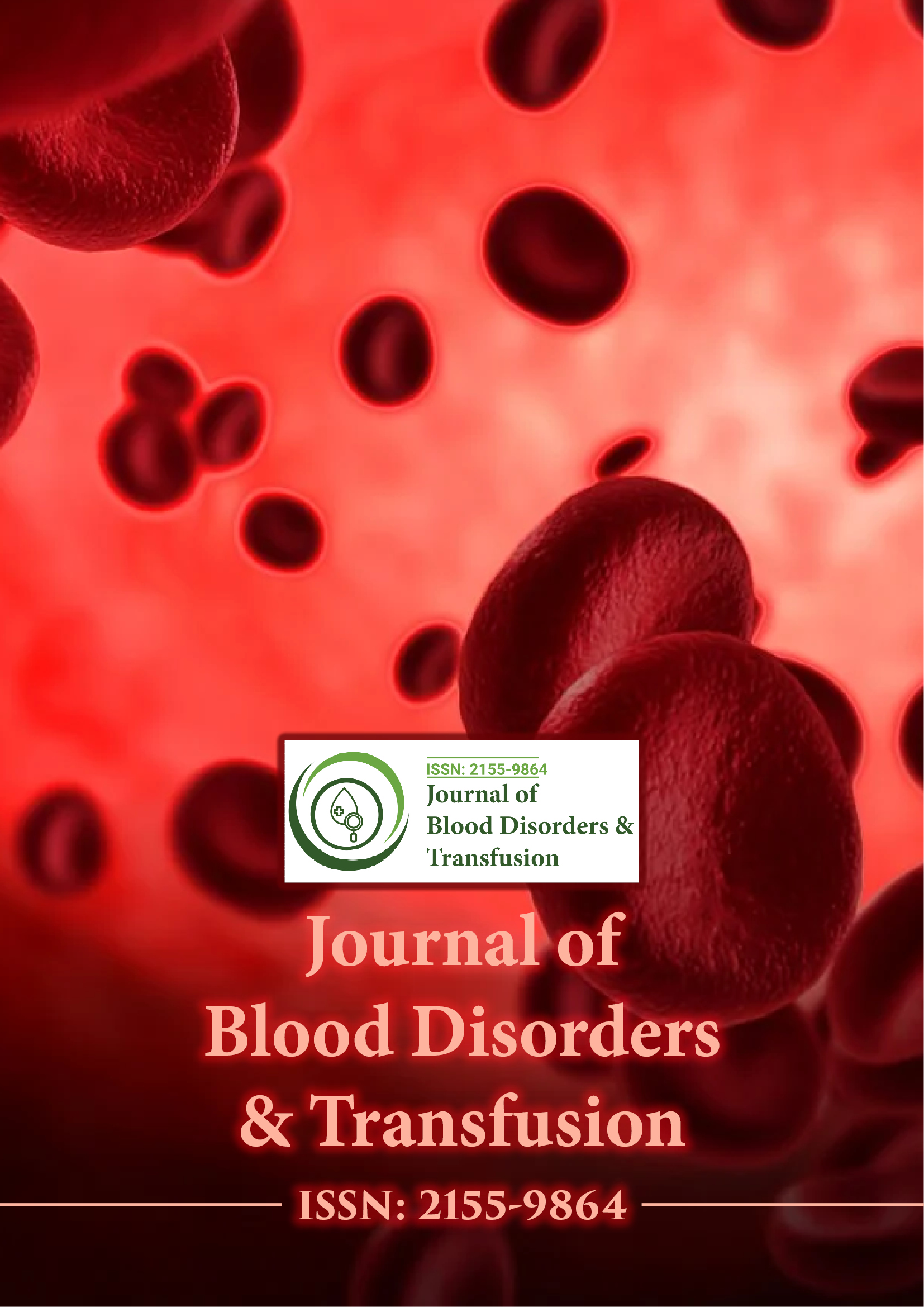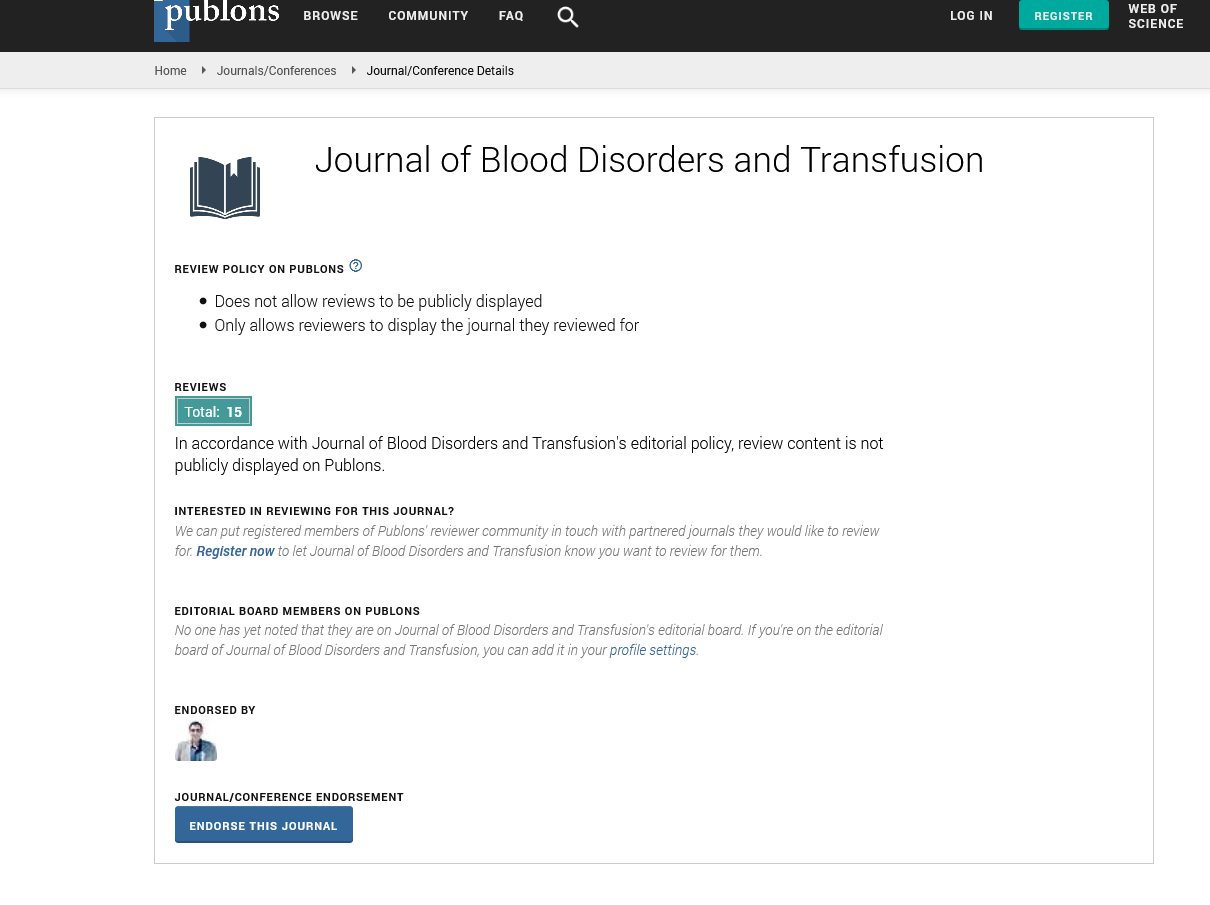Indexed In
- Open J Gate
- Genamics JournalSeek
- JournalTOCs
- Ulrich's Periodicals Directory
- RefSeek
- Hamdard University
- EBSCO A-Z
- OCLC- WorldCat
- Proquest Summons
- Publons
- Geneva Foundation for Medical Education and Research
- Euro Pub
- Google Scholar
Useful Links
Share This Page
Journal Flyer

Open Access Journals
- Agri and Aquaculture
- Biochemistry
- Bioinformatics & Systems Biology
- Business & Management
- Chemistry
- Clinical Sciences
- Engineering
- Food & Nutrition
- General Science
- Genetics & Molecular Biology
- Immunology & Microbiology
- Medical Sciences
- Neuroscience & Psychology
- Nursing & Health Care
- Pharmaceutical Sciences
Rituximab twice weekly for refractory thrombotic thrombocytopenic purpura in critically ill patient with ARDS
16th World Hematology Congress
March 18-19, 2019 | Rome, Italy
Shehab F Mohamed
National Center for Cancer Care & Research, Qatar
Posters & Accepted Abstracts: Blood Disord Transfus
Abstract:
Background: Thrombotic thrombocytopenic purpura (TTP) is a rare life threatening blood disorder famously
characterized by thrombocytopenia, micro angiopathic hemolytic anemia, fever, renal impairment and neurological
abnormality. Plasmapheresis and steroids is the standard of care, however there are refractory cases of TTP which
require further managements. Rituximab is used as salvage treatment for refractory TTP. We report here two difficult
cases of refractory TTP responded to Rituximab twice weekly.
Clinical cases: The first case is a 32 years old male patient, known case of ulcerative colitis on Mesalamine, presented
because of watery diarrhea, initial investigation were suggestive of TTP (high bilirubin, low platelet, low HGB and
high creatinine). He was started on plasmapheresis and prednisolone. During his stay he devolved status epileptics
for which he was intubated, started on levetiracetam and transferred to the Intensive care unit (ICU) He started to
show improvement in terms of increase in platelets count after plasmapheresis and steroids, then he deteriorated
and so he was started on Rituximab twice per week in addition to the steroids and plasmapheresis. He was extubated
later after improvement and sent to the medical word for further rehabilitation and medication adjustment. The
second case is a 26 years old male patient, presented complaining of anorexia, nausea and yellowish discoloration of
the sclera and a few episodes of vomiting for 3 days before admission. Patient was initially doing well then he started
to develop neurologic symptoms in the form of dysphasia, confusion and eventually he became obtunded and nonresponsive
requiring intubation and MICU admission, those neurological finding in addition to his lab picture of
microangiopathic hemolysis and very low platelets, warranted the diagnosis of TTP. Patient received plasmapheresis
daily, rituximab twice weekly and steroids, started to improve gradually after that eventually patient’s neurological
status improved and completely recovered.
Discussion: Thrombotic thrombocytopenic purpura (TTP) is a rare life-threatening blood disorder. The
pathophysiology is lack of protease which cleavage von Willebrand large multimeric. The protease called ADAMTS13
and it could be absent congenitally or acquired Idiopathic TTP. The established management is plasma exchange
(PE) along with steroids 80% of patients to survive, however, the result is still there are refractory and relapse cases.
Refractory cases have higher morbidity and mortality. There is increase in usage of Rituximab as salvage therapy in
cases of TTP. The two cases were of young males. The patients were not responding and developing neurological
symptoms, while on steroids and PEX that means refractory. According to our knowledge rituximab twice weekly
along with other chemotherapy agents was never used before. Our two patients were refectory to PE although, it was
going on daily for more than 2-3 weeks along with steroids.
Conclusion: Rituximab addition to PE and steroids is good strategy. Rituximab could be savage and lifesaving. We
suggest it can be used twice weekly safely, although further studies needed to proof efficacy
Recent Publications
1. Shehab F Mohamed, Mohamed A Yassin, Abdulqadir J Nashwan and Susana E L akiki (2018) Concomitant
BRAF mutation in hairy cell leukemia and papillary thyroid cancer. Blood DOI: 10.1182/blood-2018-99-116084.
2. Shehab Fareed, Abdulqadir J Nashwan, Sulieman Abu Jari and Moh Yassin (2017) Spinal Abscess Caused by
Salmonella Bacteremia in a Patient with Primary Myelofibrosis. American Journal of Case Reports 18:859-864.
Biography :
Shehab F Mohamed is a Hematologist in National Center for Cancer Care and Research, Qatar which is a part of Hamad Medical Corporation. He has multiple publications on infections disease, hematology leukemia, MPNs.
E-mail: shehabfareed@yahoo.com

